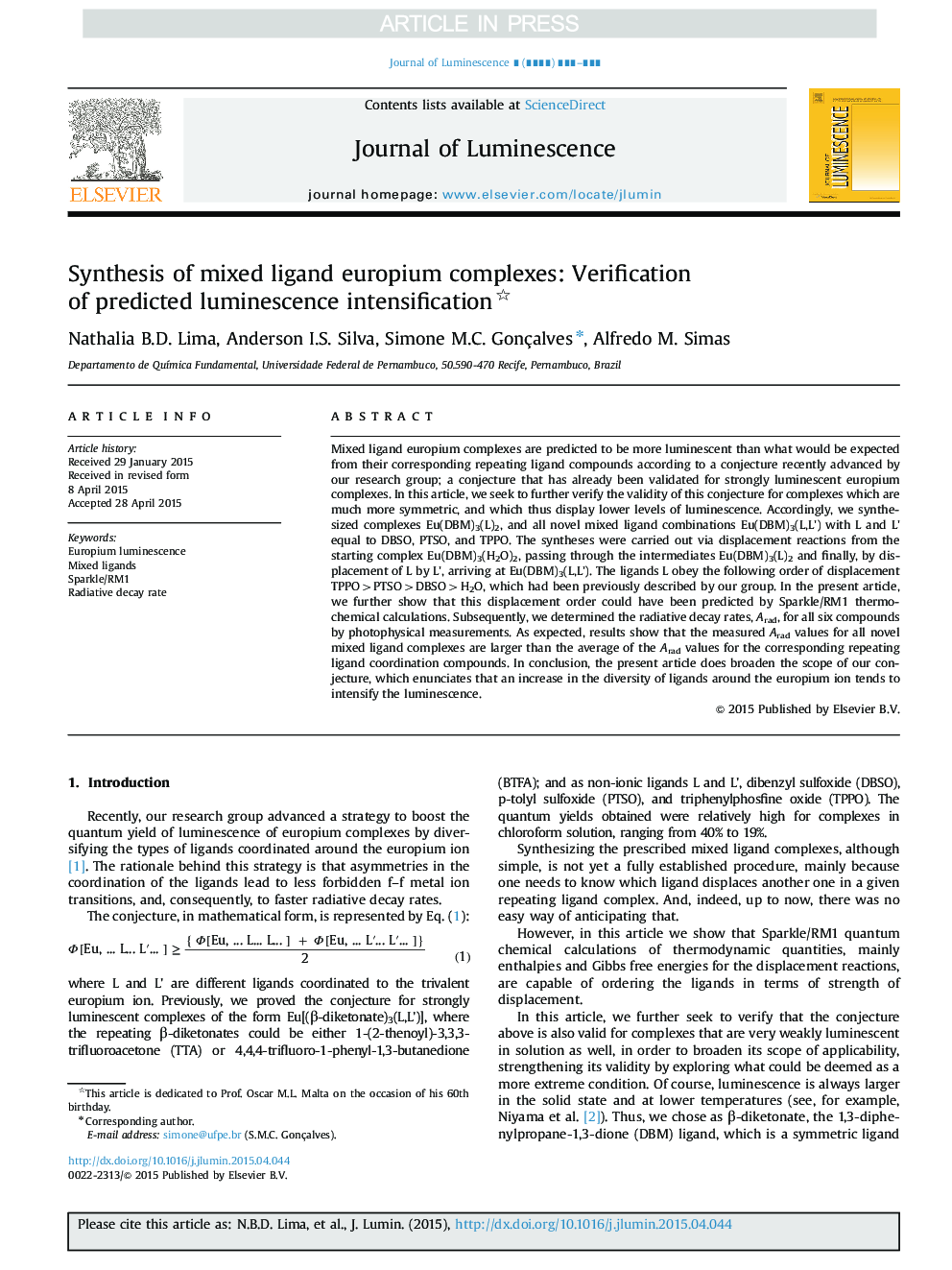| Article ID | Journal | Published Year | Pages | File Type |
|---|---|---|---|---|
| 5399015 | Journal of Luminescence | 2016 | 8 Pages |
Abstract
Mixed ligand europium complexes are predicted to be more luminescent than what would be expected from their corresponding repeating ligand compounds according to a conjecture recently advanced by our research group; a conjecture that has already been validated for strongly luminescent europium complexes. In this article, we seek to further verify the validity of this conjecture for complexes which are much more symmetric, and which thus display lower levels of luminescence. Accordingly, we synthesized complexes Eu(DBM)3(L)2, and all novel mixed ligand combinations Eu(DBM)3(L,L') with L and L' equal to DBSO, PTSO, and TPPO. The syntheses were carried out via displacement reactions from the starting complex Eu(DBM)3(H2O)2, passing through the intermediates Eu(DBM)3(L)2 and finally, by displacement of L by L', arriving at Eu(DBM)3(L,L'). The ligands L obey the following order of displacement TPPO>PTSO>DBSO>H2O, which had been previously described by our group. In the present article, we further show that this displacement order could have been predicted by Sparkle/RM1 thermochemical calculations. Subsequently, we determined the radiative decay rates, Arad, for all six compounds by photophysical measurements. As expected, results show that the measured Arad values for all novel mixed ligand complexes are larger than the average of the Arad values for the corresponding repeating ligand coordination compounds. In conclusion, the present article does broaden the scope of our conjecture, which enunciates that an increase in the diversity of ligands around the europium ion tends to intensify the luminescence.
Related Topics
Physical Sciences and Engineering
Chemistry
Physical and Theoretical Chemistry
Authors
Nathalia B.D. Lima, Anderson I.S. Silva, Simone M.C. Gonçalves, Alfredo M. Simas,
